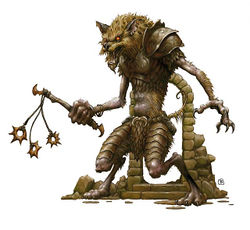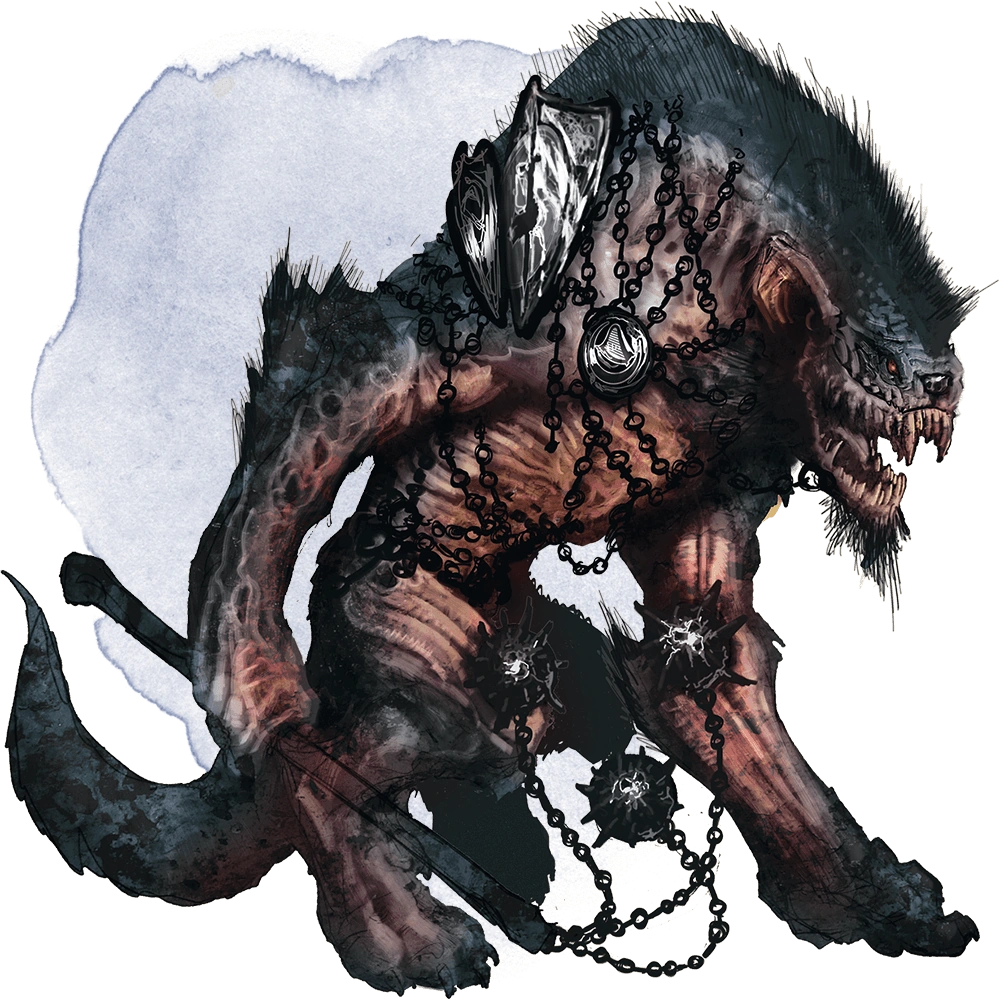The unfortunate consequence of players hitting more often and doing more damage per level is that NPCs are really just not viable foes at all. A common scenario in AD&D is an NPC of approximately the same level as the players with a few minions. In 5e, the players focus-fire on the NPC, killing him in the first round, then mop up the minions. Let's look at why, focusing on 5th-level characters.
The party opens the door on a 20'x20' room to confront an evil cleric standing behind a row of orcs armed with spears. Our wizard decides to save his Fireball for later, as this isn't a very hard fight. We're going to focus-fire on the evil cleric. The fighter throws handaxes, the rogue shoots his shortbow, the wizard casts Magic Missile, and the cleric casts Spiritual Hammer. How's this work out?
In AD&D, the evil cleric has +1 chain and a shield for AC 3. The DM gives him 6 hp per hit die for 30 hp.
- The fighter's exceptional strength gives him THAC3 of 10, and his axe does d6+3 damage.
- The thief's high DEX gives him a THAC3 of 13, and his arrow does d6 damage.
- The cleric's THAC3 is 14, and his Spiritual Hammer does d4+2 damage.
- The wizard does 3d4+3 damage. He cast Protection From Normal Missiles earlier to ensure his spells succeed while the party clears rooms.
If everybody hits, the evil cleric takes 2d6+4d4+8 damage. But the thief has a 40% chance to hit, and the cleric has a 35% chance to hit, so when we factor all this in, the party has (using my supersecret calculator) about a 0.5% chance of taking out the evil cleric in the first round. Of course, players don't do all this math, but experienced AD&D players have an intuitive feel for this, and consequently know it is much more worthwhile to attack the orcs immediately (who have AC 6 and an average 4.5 hp apiece) than to concentrate on the cleric.
In 5e, the cleric has chain and shield for AC 18. The DM gives him 7 hp per hit die for 35 hp. In addition, he gets an effective +2 to AC for being behind the row of orcs.
- The fighter gets to throw two handaxes at +7 to hit, and each axe does 1d6+6 thanks to his Duelist fighting style,
- The thief, who is hidden around the corner, gets advantage to attack, +7 to hit, 4d6+4 damage.
- The cleric's Spiritual Weapon attacks at +6, ignores the protection from cover, and does 1d8+3 damage. In addition, our cleric also throws a light hammer at +6 to hit, 1d4+3 damage.
- The wizard uses a 2nd-level slot for 4d4+4 damage.
My experience with 5e is that NPC + minions tends to be that the party focus-fires on the NPC and eliminates him in one round, or maybe the top of the second. This makes these kinds of scenarios wholly unsatisfying in a way they aren't in AD&D.


